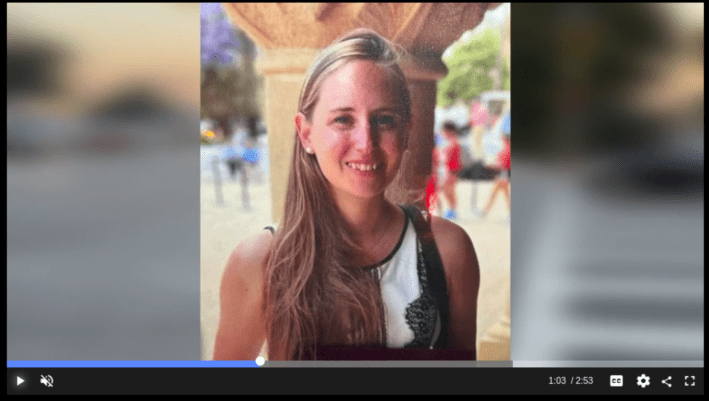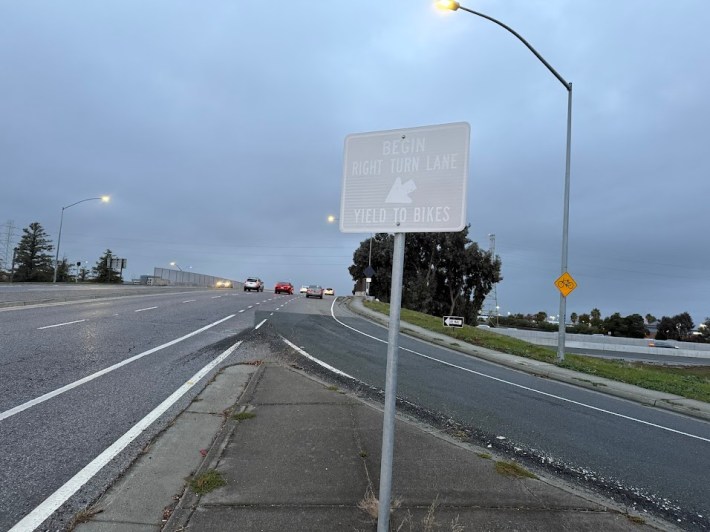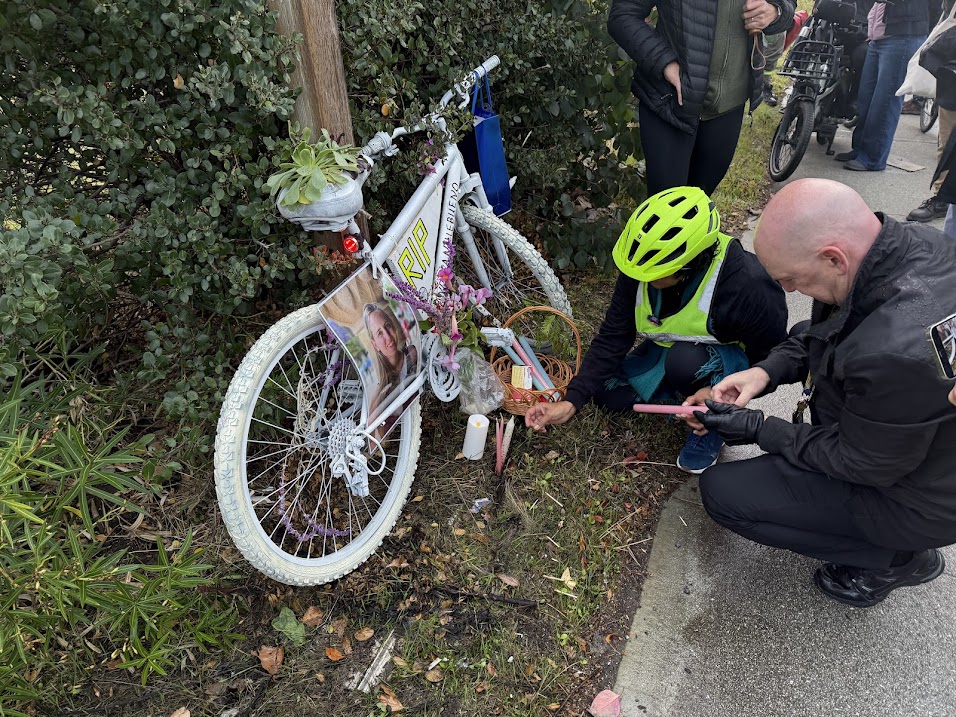Definition: A booby trap is a device or setup that is intended to kill, harm, or surprise a human or another animal.
Andrea Vallebueno, a 31-year-old research fellow at Stanford, died last month after riding her bike into a cycling death trap on the Holly Street overpass in San Carlos. Advocates met at the location late last week to install a ghost bike in her honor and to demand county and state officials for once be held accountable for building such an obviously deadly street. First, from KRON4's excellent coverage of the tragedy:

"We protested the 101 widening [that] killed the Holly Street Pedestrian/Bike Bridge project that was ready to build. Now a 31-year-old woman has died while trying to cross 101 on bike via Holly," wrote Penisula advocate Mike Swire in an email to Streetsblog about the vigil. "The City of San Carlos and SMCTA are blaming each other for the project's failure in the wake of her death. Meanwhile there is little chance that the safety project will get built in the next five years."
More from the invite to the ghost-bike installation and vigil held Thursday, December 12:
The City of San Carlos had a shovel-ready plan to install a safety bridge across 101, which would have made it safe for those who leave their cars at home. Nevertheless, County leaders elected to pursue a $600M widening of US 101, in the interest of making it easier to drive and encouraging more auto traffic on local streets. According to San Carlos (then) Mayor John Dugan, this auto-focused project prevented the pedestrian/bike bridge from moving forward. The project now lacks funding to move forward and there are no plans for temporary or permanent safety improvements.
Vallebueno was killed on the morning of Saturday, November 16, while attempting to navigate a paint-only bike lane between vehicle lanes on what is essentially a freeway interchange over the recently widened 101. See Swire's photo below:

Of course, there are examples of booby trap intersections such as this all over the Bay Area. And it's typical for Caltrans and county and city officials to claim they don't have funds for real bike lanes at the same time they spend hundreds of millions on highway widenings. From Streetsblog's view, the engineers who continually design and sign off on deathtraps such as this belong in prison. They know these intersections kill. As to the cost excuse: if there isn't money to make a project safe for everyone, regardless of how they get around, then there isn't enough money to build it, period.
If there's any upside to this latest tragedy, it's that this story was well-covered in the mainstream press (although some continue to call it an "accident" when clearly it was not). Read more in the San Jose Mercury News, which includes this fact: "Between 2018 and 2023, at least eight cyclists were severely injured and three pedestrians were killed in San Carlos, a city of about 29,000 people, due to vehicle crashes. Overall, 49 cyclists and 42 pedestrians were injured during that period."
Streetsblog has also covered the utter futility of widening 101, which, in addition to making streets more dangerous, made traffic worse.
Read more about Andrea Vallebueno on her online tribute and memory wall.






